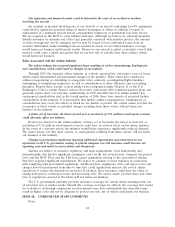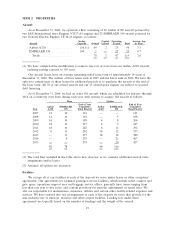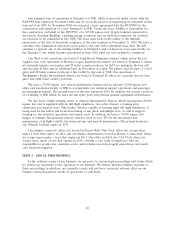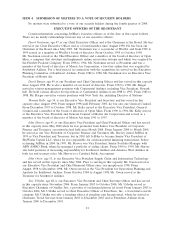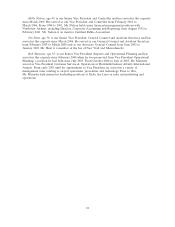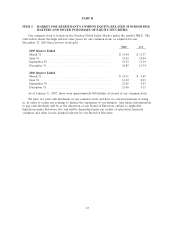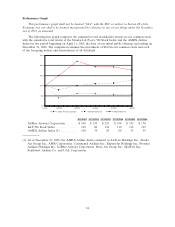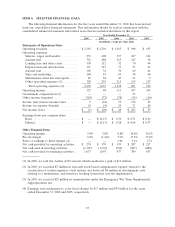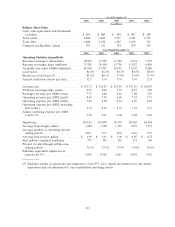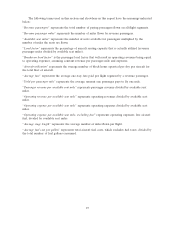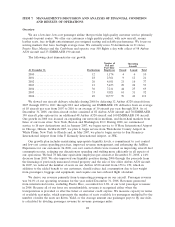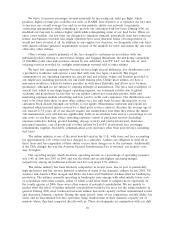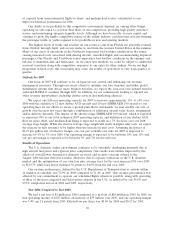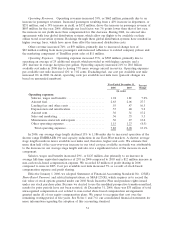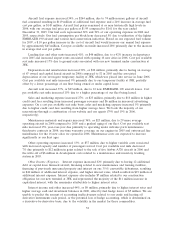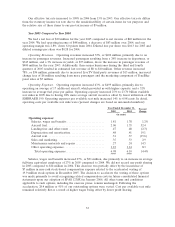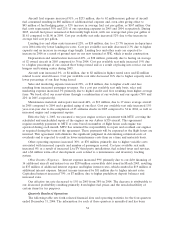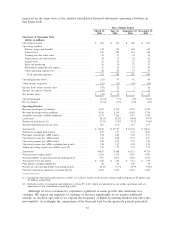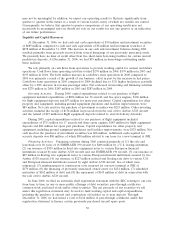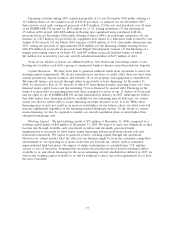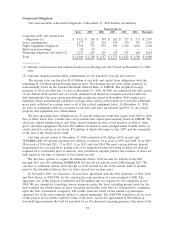JetBlue Airlines 2006 Annual Report Download - page 38
Download and view the complete annual report
Please find page 38 of the 2006 JetBlue Airlines annual report below. You can navigate through the pages in the report by either clicking on the pages listed below, or by using the keyword search tool below to find specific information within the annual report.
ITEM 7. MANAGEMENT’S DISCUSSION AND ANALYSIS OF FINANCIAL CONDITION
AND RESULTS OF OPERATIONS
Overview
We are a low-fare, low-cost passenger airline that provides high quality customer service primarily
on point-to-point routes. We offer our customers a high quality product, with new aircraft, roomy
leather seats, free in-flight entertainment, pre-assigned seating and reliable performance. We focus on
serving markets that have had high average fares. We currently serve 50 destinations in 21 states,
Puerto Rico, Mexico and the Caribbean and operate over 500 flights a day with a fleet of 98 Airbus
A320 aircraft and 23 EMBRAER 190 aircraft.
The following chart demonstrates our growth:
At December 31, Destinations
Number of
Full and
Part-Time
Employees
Operating
Aircraft
Owned Leased Total
2000 .................................. 12 1,174 4 6 10
2001 .................................. 18 2,361 9 12 21
2002 .................................. 20 4,011 21 16 37
2003 .................................. 21 5,433 29 24 53
2004 .................................. 30 7,211 44 25 69
2005 .................................. 33 9,021 61 31 92
2006 .................................. 49 10,377 70 49 119
We slowed our aircraft delivery schedule during 2006 by deferring 12 Airbus A320 aircraft from
2007 through 2009 to 2011 through 2012 and adjusting our EMBRAER 190 deliveries from an average
of 18 aircraft per year from 2007 to 2010 to an average of 10 aircraft per year through 2014. As of
December 31, 2006, our firm aircraft orders consisted of 82 Airbus A320 aircraft and 78 EMBRAER
190 aircraft, plus options for an additional 48 Airbus A320 aircraft and 100 EMBRAER 190 aircraft.
Our growth in 2006 was focused on expanding our network in medium- and short-haul markets from
three of our focus cities: New York, Boston and Washington, D.C. During 2006, we commenced
service to 16 new destinations and, in January 2007, we began service to O’Hare International Airport
in Chicago, Illinois. In March 2007, we plan to begin service from Westchester County Airport in
White Plains, New York to Florida and, in May 2007, we plan to begin service to San Francisco
International Airport from John F. Kennedy International Airport, or JFK.
Our growth plan includes maintaining appropriate liquidity levels, a commitment to cost control
and low-cost carrier spending practices, improved revenue management, and enhancing the JetBlue
Experience for our customers. In 2006, our cost control efforts were focused on improving aircraft fuel
consumption rates, reducing our discretionary spending and staffing more efficiently in all aspects of
our operations. We had 78 full-time equivalent employees per aircraft at December 31, 2006, a 14%
decrease from 2005. We also improved our liquidity position during 2006 through the proceeds from
the financing of previously unsecured owned property and the sale of five older Airbus A320 aircraft.
In 2007, we reduced the number of seats on our Airbus A320 aircraft from 156 to 150, which in
addition to the added benefit to our customers, should reduce fuel consumption due to less weight
from passengers, baggage and equipment, and require one less onboard flight attendant.
We derive our revenue primarily from transporting passengers on our aircraft. Passenger revenue
was 94.1%of our operating revenues for the year ended December 31, 2006. Revenues generated
from international routes, excluding Puerto Rico, accounted for 2.6%of our total passenger revenues
in 2006. Because all of our fares are nonrefundable, revenue is recognized either when the
transportation is provided or after the ticket or customer credit expires. We measure capacity in terms
of available seat miles, which represents the number of seats available for passengers multiplied by the
number of miles the seats are flown. Yield, or the average amount one passenger pays to fly one mile,
is calculated by dividing passenger revenue by revenue passenger miles.
28


